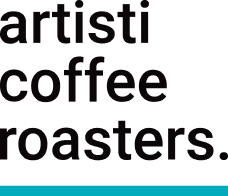When it comes to ordering coffee, the choice between a flat white, latte, and cappuccino can be a bit confusing. They all involve espresso and steamed milk, but the experience of drinking each is distinctly different. Let’s dive into the key differences between these popular coffee drinks, focusing on the cups they’re served in, the coffee-to-milk ratio, and most importantly, the milk texture.
Skip straight to our video.
The Cups and Coffee-to-Milk Ratio
First, let’s talk about the cups. The type and size of the cup can influence the final flavor profile of your coffee. Here’s a quick guide to the sizes used:
- Flat White: Typically served in a 192 ml cup.
- Latte: Usually comes in a 220 ml glass, offering a bit more milk compared to the other two.
- Cappuccino: Served in a 190 ml cup.
While all three drinks contain the same amount of coffee—usually a single shot—the difference lies in the volume of milk added. Lattes, being served in a larger glass, tend to have a higher milk-to-coffee ratio, making the flavor more diluted compared to a flat white or cappuccino.
If you prefer a stronger coffee, you can always opt for a double shot, or even a double ristretto, which offers a more intense coffee flavor. Keep an eye out for my upcoming video on ristrettos if you’re interested in learning more about this concentrated form of espresso.
The Milk Texture
The biggest difference between a flat white, latte, and cappuccino is the milk texture, which is created by adding different amounts of air to the milk during the steaming process.
-
Flat White: The key characteristic of a flat white is its smooth, velvety milk with minimal froth—about 5 milliliters. To achieve this, you only introduce air to the milk for one to two seconds while steaming. This results in a creamy, slightly textured milk that blends well with the espresso without creating a thick foam layer.
-
Latte: Lattes have slightly more texture than flat whites, with around 10 milliliters of froth. To achieve this, you steam the milk a bit longer—around three to four seconds of air. The milk is still creamy but has a bit more body, making it perfect for pouring latte art and giving the drink a richer mouthfeel.
-
Cappuccino: Cappuccinos are known for their thick, foamy top layer, with about 15 milliliters of froth. To get this texture, you introduce air into the milk for about six seconds. The milk becomes light and airy, creating a distinct layer of froth that sits on top of the coffee, often dusted with a bit of chocolate powder.
Pouring and Serving
When it comes to pouring, the milk for each drink behaves differently due to its texture:
-
Flat White: The milk is smooth and light, allowing for a simple, clean pour. Specialty coffee drinkers often prefer flat whites with a slight layer of foam but without the thick froth of a cappuccino.
-
Latte: The milk has a bit more texture, making it ideal for creating latte art. As you pour, you’ll notice the milk is thicker, allowing for intricate designs and a slightly thicker froth on top.
-
Cappuccino: The milk is airy and foamy, creating a thick layer on top of the espresso. When pouring, you might even get a slight dome effect, where the foam rises above the rim of the cup, though not excessively as in traditional styles.
Conclusion: The Drinking Experience
The differences in milk texture translate to distinct drinking experiences:
- Flat White: Offers a smooth, coffee-forward experience with a creamy mouthfeel.
- Latte: Provides a balanced flavor with a creamy texture and just enough froth to create a pleasant coating in the mouth.
- Cappuccino: Delivers a full, frothy mouthfeel with a light coffee flavor, ideal for those who enjoy a foamier texture.
These three drinks represent around 80% of the coffee volume served in many cafes, particularly here in Australia. Understanding the differences not only helps you make informed choices but also allows you to better appreciate the craft behind each cup.
Engage with Your Customers
If you’re a café owner or barista, understanding these differences is crucial when discussing options with your customers. Knowing what each drink offers will help you guide them to the perfect choice, ensuring they enjoy their coffee just the way they like it.














